More than meets the eye – How baking soda is a hidden gem in any household
- Home
- 2021 (
- Page 3 )
[Post Date]
More than meets the eye – How baking soda is a hidden gem in any household
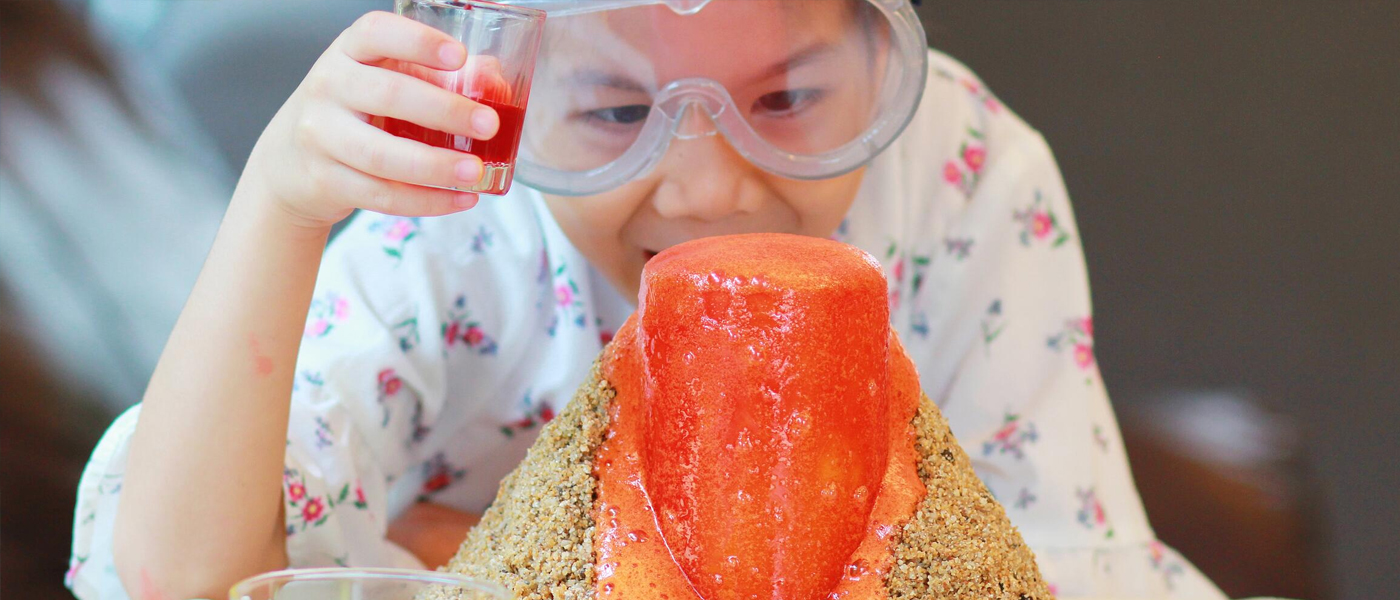
An unassuming pantry ingredient that truly is more than what you would expect, baking soda may just be one of your household’s best-kept secret with its versatility and the benefits it brings to the table. An indispensable item in any home, baking soda has multiple applications in the kitchen and the bathroom, to being a big hit among the children during playtime. Its manifold household uses instead of chemical-laden commercial alternatives makes this the greener option to keep around the house.
The baking ingredient has no chemicals or toxins within, putting your mind at ease when being utilised in your daily life for your home and family. To uncover the potential behind this ultimate multi-purpose ingredient, here are some ideas that you can use with baking soda to fully reap the wonderful benefits behind this magical ingredient.
Washing your fruits and vegetables
While an apple a day is said to keep the doctor away with the health benefits fruits and vegetables bring, we do want to make sure that the produce that we consume is pesticide-free as well. You will be surprised that even the most organic produce may contain pesticide residue too.
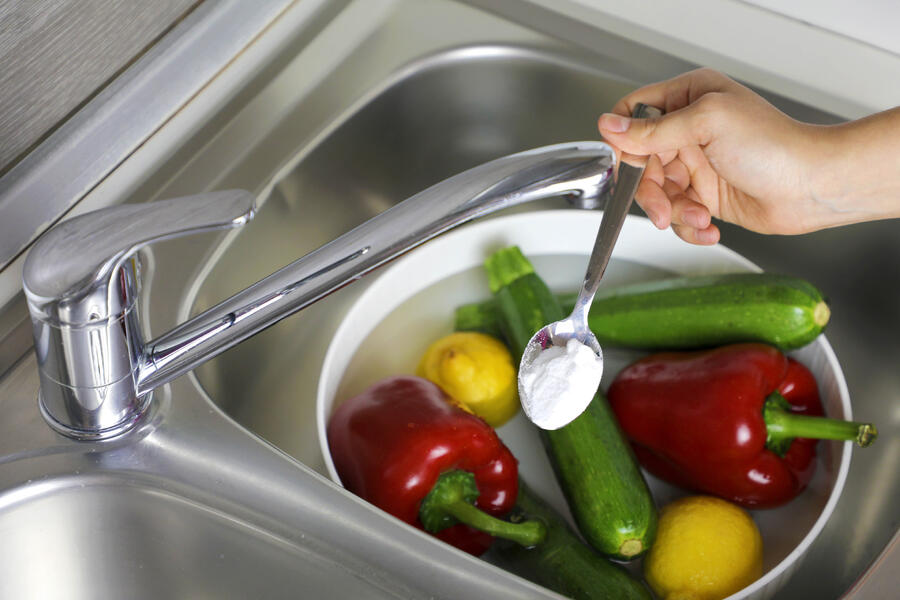
Instead of purchasing a fruit and vegetable liquid wash where you incur a greater use of plastic, consider a homemade version that is good for the earth and the entire family. According to a research by University of Massachusetts in Amherst, it was found that washing apples in water with a dash of baking soda is the most effective way to remove pesticide residue [1]. All you need to do is to leave your fruits and vegetables in a baking soda and water mixture (a sprinkle is really all you need) and let the solution break apart any leftover residue that cannot be seen with the naked eye.
Mouthwash
A mouthwash is a great step to include in maintaining your oral hygiene to keep your breath fresh and the gaps between your teeth clean. But reaching out for that funky blue mouthwash with a list of foreign ingredients, you will be surprised that making your own mouthwash is actually a much greener alternative and can be made possible with just baking soda that keeps your mouth just as clean while doing good for the environment.
Baking soda has shown to neutralise the acid of the mouth and an effective replacement for alcohol-based mouthwash [2]. The recipe is simple and only involves adding ½ teaspoon of baking soda to half a glass of water. Mix it all up and you have your own homemade organic mouthwash.
DIY family craft – Rainbow Volcano
A kid-friendly activity that can be easily made with baking soda and other household items is a testament that fun is always around us, even in the works of nature. This natural DIY volcano experiment sees the reaction between an acid and a base, and the results are safe for all and guaranteed fun for everyone.
The ingredients to make this magical rainbow volcano simply include items commonly found in the kitchen such as baking soda, vinegar, food colouring and dish soap. We recommend doing this green experiment outdoors or in an area where it is safe to get wet and easy to access for the children. A shallow plastic bin is a great option to contain the mess without compromising on the fun!
Fungicide
Fungi problems may be a common phenomenon faced by gardeners that can affect any plants’ health. It can quickly damage and even kill plants. Common symptoms include scabs, wilting, powdery mildew or rotted plant tissue.
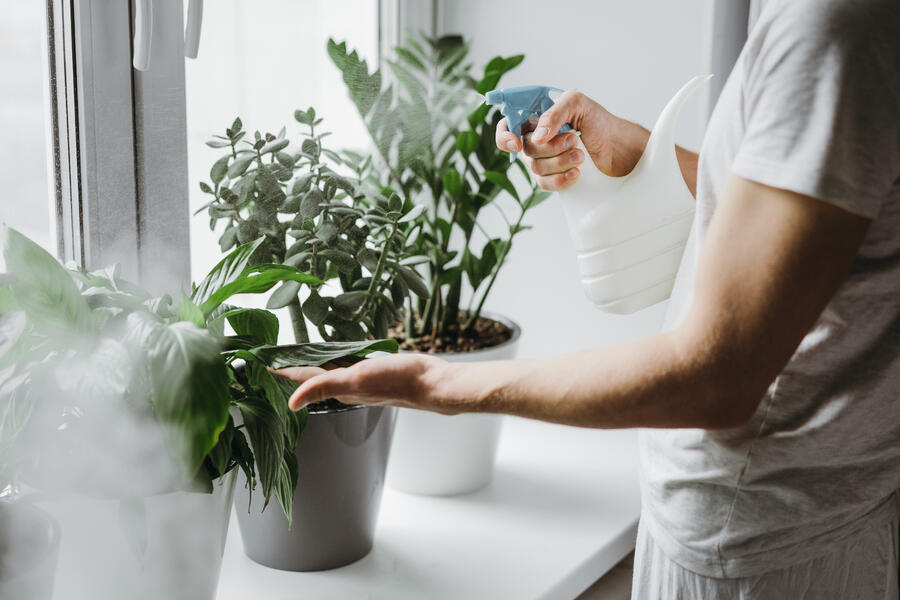
A quick and easy trick to treat this would be to make your own baking soda spray that is safe for plants and can prevent the fungi from spreading. This natural concoction is a great switch up from chemically formulated pesticide. Not only are they safe for plants and herbs, they are also safe for our bodies when used on edible produce grown for family and friends. Check out this recipe on how you can create your own mixture for your home garden.
Removing odours
Baking soda is great at absorbing odours and can leave any area feeling fresh and clean just as well as an air freshener. The list of areas it could be used as a deodorizer ranges from the trash can to smelly shoes or even the odour of overstayed food in your fridge. Simply fill a sachet of baking soda and let science do the work to neutralise and mask any odour. A great perk to making your own deodorizer is reducing the need to purchase air freshener cans. While these aerosol cans could be possibly recycled, a great habit to cultivate will be to reduce our consumption instead.
Treating heartburn
Heartburn is a burning sensation in your chest and is also often known as acid reflux [3]. It’s caused by acid refluxing out of the stomach when contents go back up into the esophagus.
The causes of it include overeating or consumption of certain types of food such as onions, citrus products, or spicy food.
Baking soda can help to treat this by neutralising the acid [4] when taken with care. Simply by mixing half a teaspoon with at least half a cup of water may be a quick natural fix to relieve the symptoms.
Stain remover
Removing those pesky food and drink stains from your clothes may just have gotten easier, more affordable, and greener with the simple use of baking soda. When dissolved with water, the baking soda can interact with the acid found in stains and help to remove them.
Simply add it into your laundry detergents when washing your clothes and it can get them looking fresh as new.
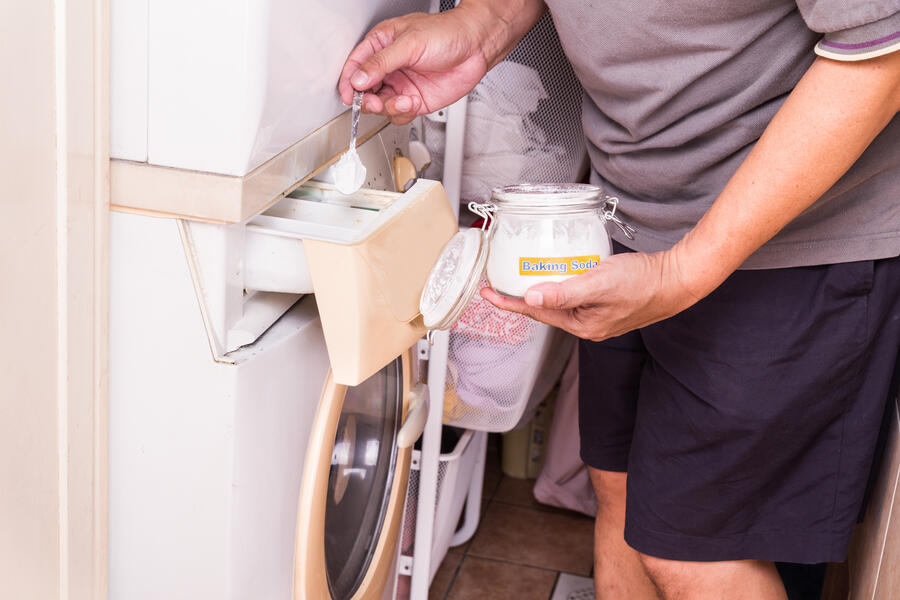
You could even cut your energy use with your washing machine due to quicker loads. Baking soda aids in boosting detergent performance and reducing suds for a shorter wash time. Finding ways to reduce your energy use at home is always a step forward towards a greener future.
If baking soda was just your usual baking must-have, we hope this guide has opened your eyes on the infinite uses of this hidden gem. Stocking up on this non-toxic ingredient is not only great for reducing unnecessary plastic packaging from multiple cleaning and household products, it will keep your home free of dangerous chemicals for a healthier environment [5]. You can even take the extra step to purchase it from your local bulk stores which further eliminates the use of single-use plastics!
After all, taking collective steps to being more mindful in our consumption sends a message to corporations and brands on the changing trends and the importance of living more sustainably. By adopting these small green practices, we can together #PowerTheChange for a greener future.
References:
- [1] (2017, October 28) Reuters, Baking soda plus water best for washing pesticides off apples
https://www.reuters.com/article/us-health-pesticides-apples/baking-soda-plus-water-best-for-washing-pesticides-off-apples-idUSKBN1CW2KV - [2] (2017) The effect of sodium bicarbonate oral rinse on salivary pH and oral microflora: A prospective cohort study
https://www.ncbi.nlm.nih.gov/pmc/articles/PMC5773983/ - [3] (2020, April 17) Healthline, What You Need to Know About Heartburn
https://www.healthline.com/health/heartburn#causes - [4] (2019, October 25) Healthline, How to Get Rid of Heartburn
https://www.healthline.com/health/gerd/heartburn-relief#elevate-upper-body - [5] (2019, April 4) Maid 4 Condos, Cleaning Tips for a Cleaner and Healthier Condo
https://www.maid4condos.com/cleaning-tips-cleaner-healthier-condo/
Image Credits: Nylon Coffee Roasters
Source: The Sustainability Project
References:
- 1 (2019) Climate Healers, Animal Agriculture is the Leading Cause of Climate Change – A Position Paper https://climatehealers.org/the-science/animal-agriculture-position-paper/
5 Sustainability Trends to Expect in 2021
- Home
- 2021 (
- Page 3 )
[Post Date]
5 Sustainability Trends to Expect in 2021
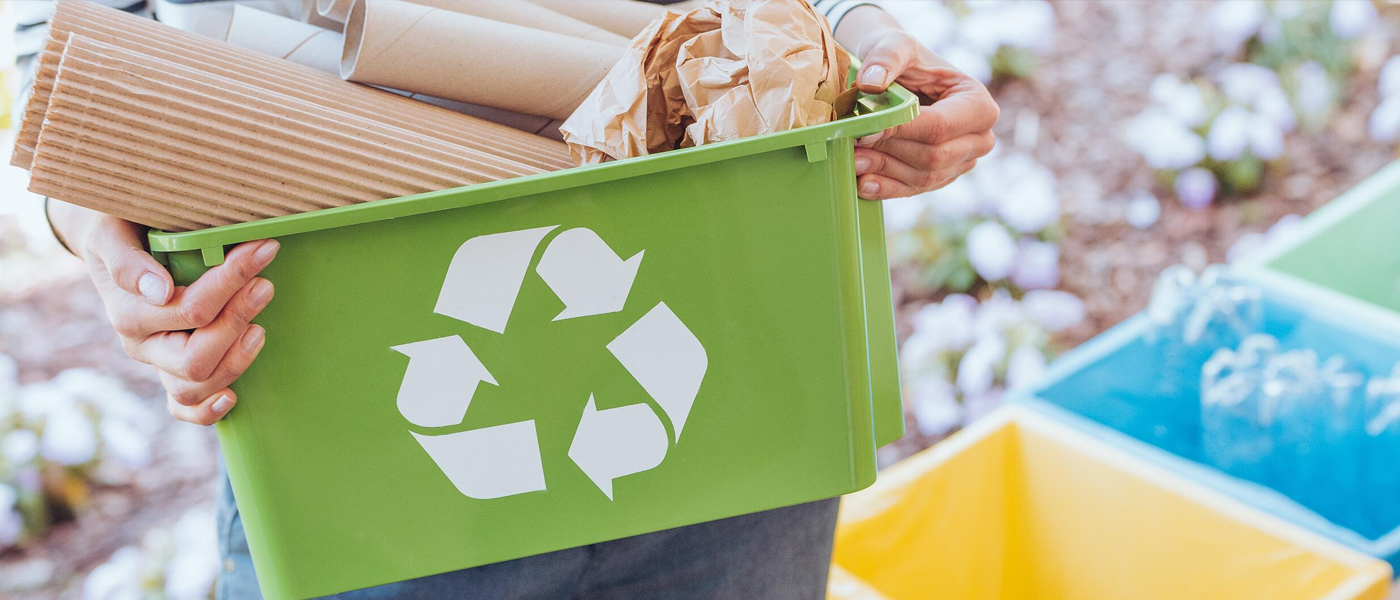
2020 has brought about new challenges that were beyond what we may have expected at the beginning of last year, but a silver lining that has emerged would be the greater focus on the environment. From reduction in emissions to reduced fashion consumption, various beneficial changes in sustainability practices happened and we know the planet will definitely welcome it.
With the rest of 2021 ahead of us, we have put together some sustainability trends that we can expect, given the progress made last year. Here are some of the trends to keep a look out for this year.
Sustainability a core focus for brands
With a greater spotlight on climate change and the detrimental effects surrounding it in the long run, there has never been a more important time to collectively become aware of how we – as individuals, corporations, and businesses – are affecting the planet. As such, a growing number of brands and organisations have made sustainability a core focus for the business. With a greater awareness of the issue, consumers and the public are calling for more to be done for the good of our Earth. In fact, three Singapore firms made it in to the world’s most sustainable companies list [1].
A greater responsibility to lead the sustainable development of global society across brands are starting to rise. With this shift in priorities, brands have delved into ways and initiatives that can foster a lifestyle of sustainability, providing options to use less plastic, recycle or choosing sustainable options.
Geneco has also launched a green initiative to recycle used red packets as a nation this Chinese New Year. This is in partnership with four other local businesses – CRU, IUIGA, REFASH and Tay Paper Recycling – to develop easy physical touchpoints to make recycling accessible. Collected red packets across 29 publicly available recycling bins will be sent to a recycling plant by Tay Paper Recycling to be pulped and made in other paper products.
Adopting a greener lifestyle at home
Eco-friendly and sustainable products among family lifestyles have been around for a long time and we predict it will continue to be the trend for a healthier earth in 2021. This can range from starting of your green journey by reducing your plastic waste or setting up a recycling bin at home, to growing your own fruits and vegetables and upcycling the items around the house.
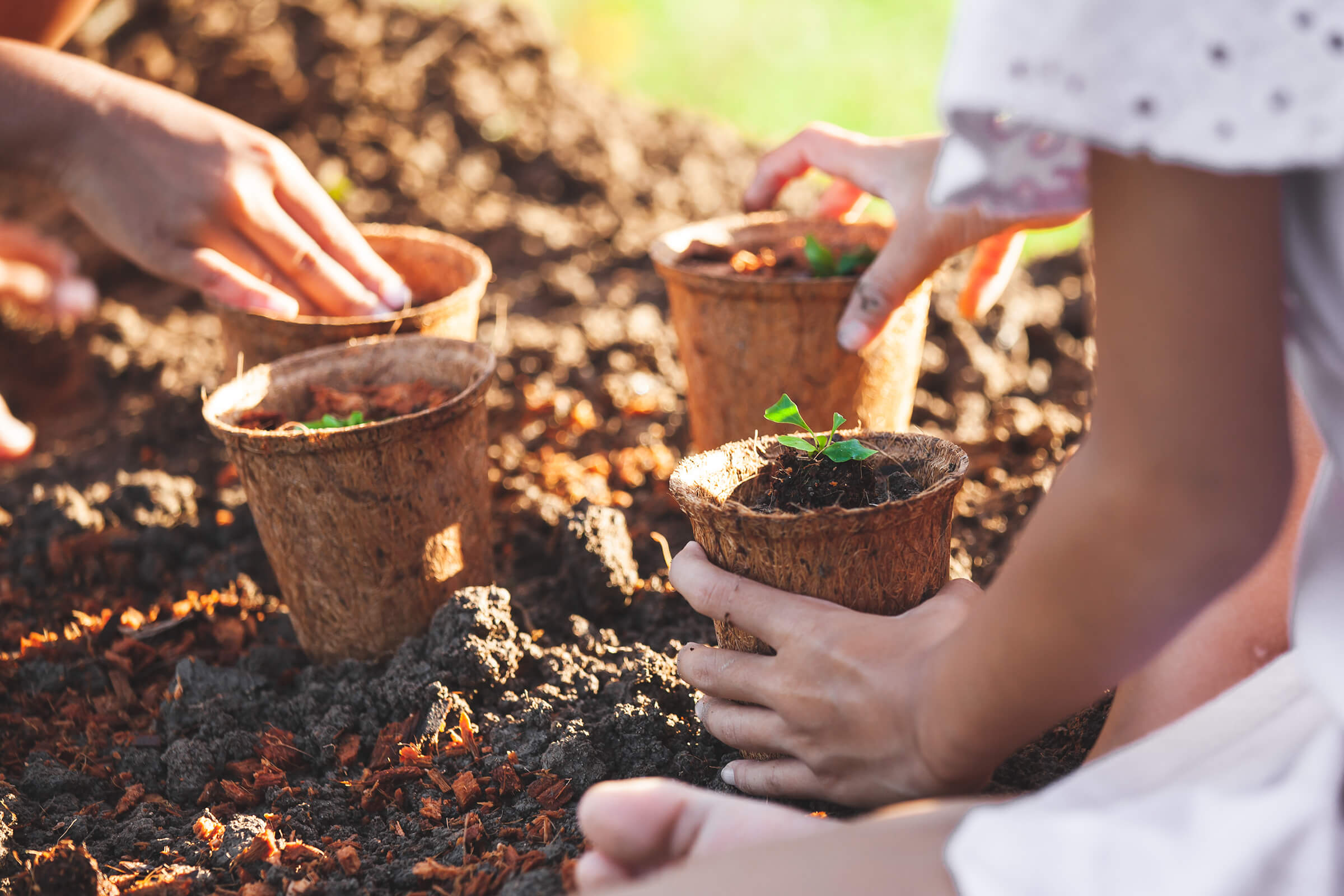
In addition, with the increased number of brands committed to have sustainability as a core focus, more schools are championing environmental sustainability as well [2] and play a crucial role in preparing future generations to be environmentally responsible. We can expect more consumers and families to practise what they have learnt and choose a greener lifestyle to resonate with the message of preserving what we have and to help conserve the environment for the next generation.
Working from home
The pandemic sure has brought about drastic changes to the work lives of many Singaporeans which have also impacted how they manage their time and productivity. Because of the situation, more companies have allowed their employees to work at home, which eliminates the need to commute to work. This helps to reduce the amount of fuel usage to run vehicles which in turn, translates to lesser greenhouse gas emissions. In fact, Global Workforce Analytics, estimates that working from home half the week can reduce emissions by 54 million ton every year in the U.S [3].
If working from home seems to be the norm for you for the rest of 2021, consider setting rules and boundaries at home to help your kids stay on track with their roles while you are busy with your online meetings. This not only lets you reap the full benefits that working from home gives in terms of the flexibility and efficiency, it also allows one to strengthen their bonds with their children and family and share there is a time for everything. We have even put together some tips on how you can place your family first even when you are busy working from home. That way your family gets the attention they need and work still gets done!
Rediscovering Singapore
The reduction in air travel has significantly reduced the amount of greenhouse gas emitted in 2020. With travelling out of the country for your next vacation being put on hold for the unseeable future, look no further than your own backyard and rediscover the hidden gems located across Singapore. Beyond the city sights that Singapore is famous for, consider going the off-beaten track and explore the lush scenic greenery the island has to offer. We have even put together a list of hiking trails to embark on to get away from the bustle of the city and take in the fresh air from above.
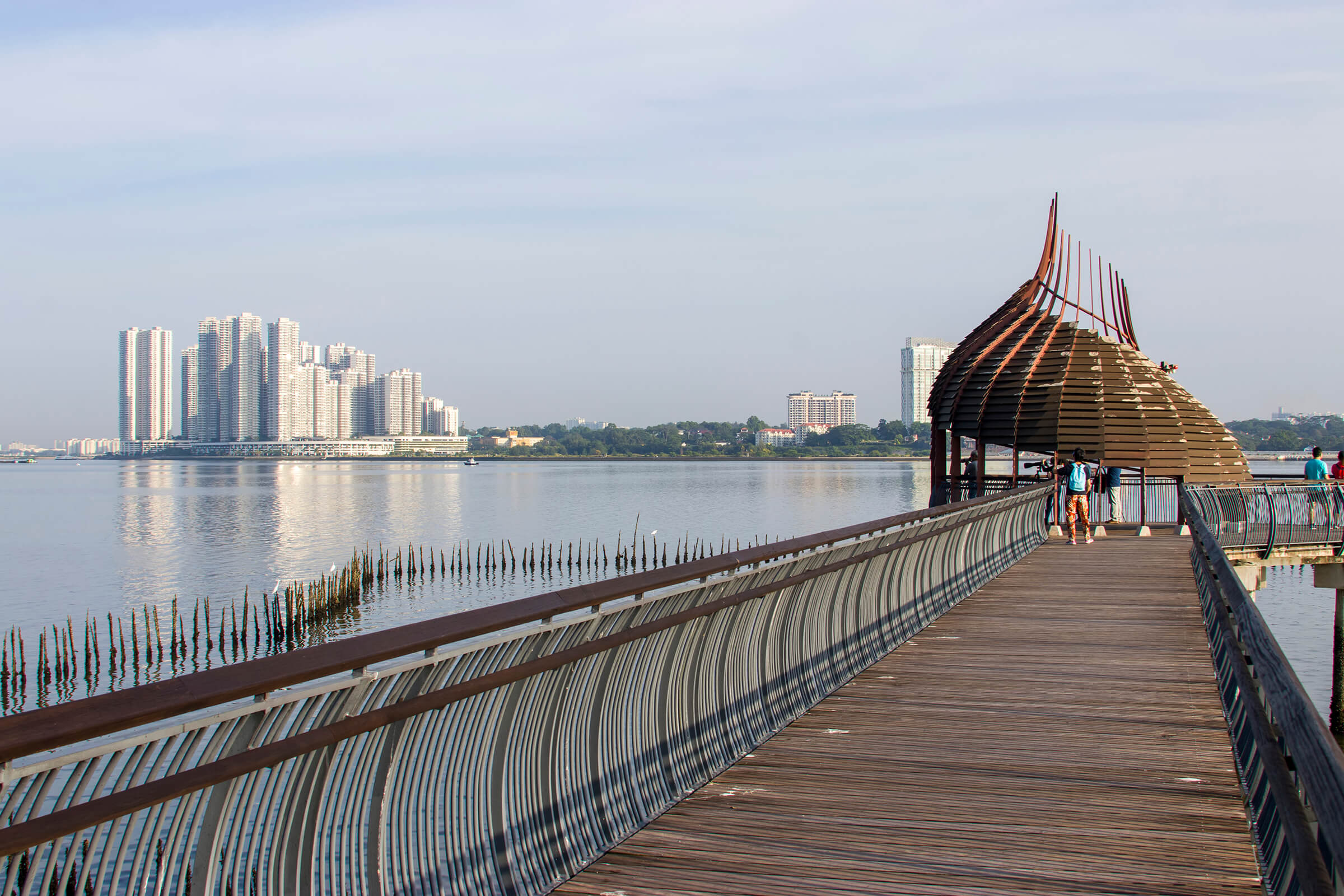
Take your kids on an adventure around various spots in Singapore to show that interesting sights are not too far from your doorstep. All Singaporeans above 18 are even entitled to $100 worth of SingapoRediscovers vouchers in support of local businesses during this difficult time. Our personal recommendations include embarking on a Kampong and Farm Full Day Tour for a back-to-the-olden day tour and to see first-hand how local vegetables are grown in support for local food production, or even an ecological tour in Sungei Buloh Wetland Reserve to bask in the natural beauty Singapore’s first ASEAN Heritage Park has to offer.
Electric Vehicles
Electric vehicles are here to stay with Singapore having committed to phase out petrol vehicles by 2040 [4]. Starting from 2021, Singaporeans can expect the adoption of electric vehicles to be more attractive with an early adoption scheme to be rolled out with rebates capped at $20,000 per vehicle. This is among other initiatives such as a reduced road tax and an expansion of the charging infrastructure, allowing more Singaporeans to be able to enjoy the enhanced incentives implemented to encourage uptake of this sustainable transportation option.
If electric vehicles may be out of your reach in 2021, consider switching to public transportation to reduce the amount of emissions generated as compared to driving your own vehicle. Car-pooling is another great way to ensure you keep your carbon footprint low whenever you are travelling from one end of Singapore to the other!
A promising 2021 is in the line-up as we expect these trends to take from and shape. Here at Geneco, going green will always be part of our voice in advocating for a more sustainable future for our customers and Singapore. You can look forward to seeing how Geneco continues to do its part for the earth and power the change.
References:
- [1] (2021, January 26) Singapore Business Review, Three Singapore firms named to world's most sustainable companies list
https://sbr.com.sg/economy/news/three-singapore-firms-named-worlds-most-sustainable-companies-list - [2] (2020, November 6) TODAY, A surprising discovery of how Singapore schools are championing environmental sustainability
https://www.todayonline.com/voices/surprising-discovery-how-singapore-schools-are-championing-environmental-sustainability - [3] (2019, October 7) Capital, The Environmental Benefits of Remote Working
https://www.capital-ges.com/the-environmental-benefits-of-remote-working/ - [4] (2020, February 18) The Straits Times, Singapore Budget 2020: Push to promote electric vehicles in move to phase out petrol and diesel vehicles
https://www.straitstimes.com/singapore/transport/singapore-budget-2020-push-to-promote-evs-in-move-to-phase-out-petrol-and-diesel
Image Credits: Nylon Coffee Roasters
Source: The Sustainability Project
References:
- 1 (2019) Climate Healers, Animal Agriculture is the Leading Cause of Climate Change – A Position Paper https://climatehealers.org/the-science/animal-agriculture-position-paper/
Tips to help you organise your wardrobe and save the earth this Chinese New Year
- Home
- 2021 (
- Page 3 )
[Post Date]
Tips to help you organise your wardrobe and save the earth this Chinese New Year
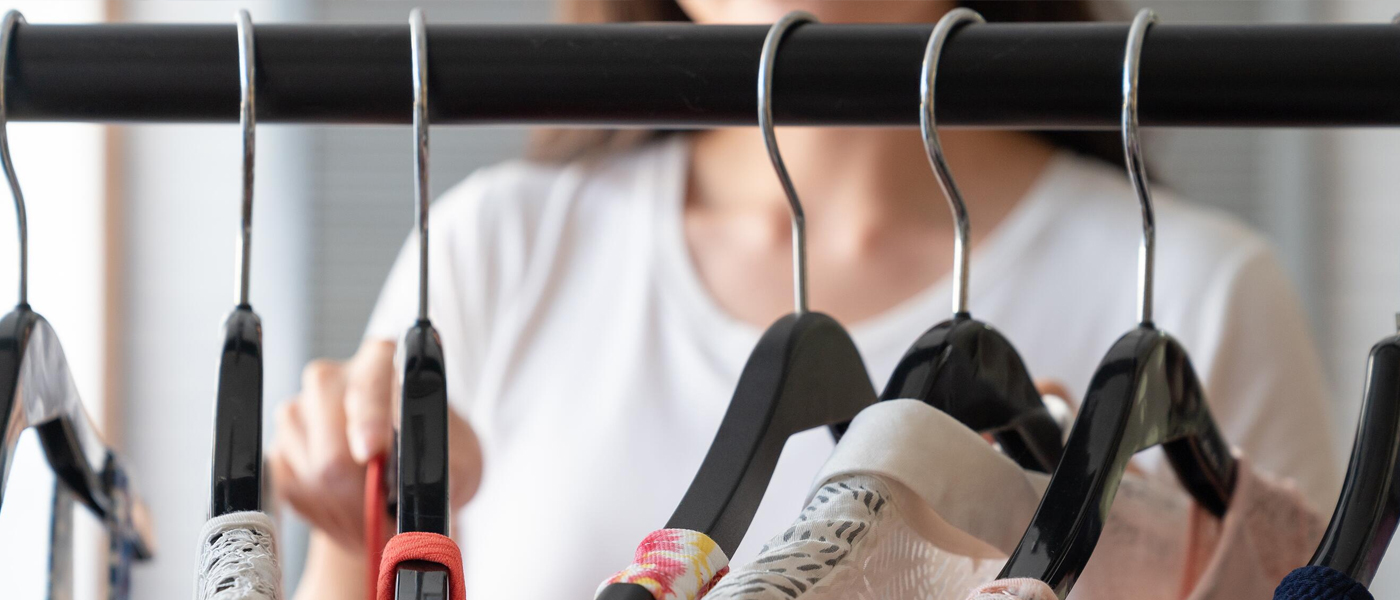
Whether you have resolved to declutter your wardrobe, it is always a good idea to start the beginning of the year with a fresh and organised wardrobe to get you kickstarted on a clean note. With Chinese New Year right around the corner, it may even be that extra motivation to do a spring cleaning of your closet. But if you are not sure how or where to get started, we have curated a step-by-step guide that will take you from A to Z on getting your wardrobe clean while still doing good for the earth.
Step 1: Take it all out
The first step is the easiest step and certainly not much of a huddle to get you started. Simply begin by taking everything out of your closet, empty your drawers and get your hangers off the rack. It might seem like you are creating a mess, but in fact emptying your wardrobe is very much a good check on the total amount of clothes you have. This is to help you realise and give you a sense of the magnitude of clothing items that you own, and certainly a reminder on your consumption habits. Once you have a good idea on the total number of clothes you own, it easily brings you to the next step of the cleanout.
Step 2: Set a goal
Once your clothes are all together in a giant pile, take note of the size of it and set goals to manage your wardrobe situation. If your wardrobe is bursting and your pile of clothes seems to be a huge mountain, think about the outcome you would want to achieve. It could be mixing and matching your outfits among key pieces in your collection that you frequently wear, or simply choosing to pass on any clothes that has not been worn for the past year or so.

A great tip that could get you started on your goals for your wardrobe is the “one item in, one item out” rule. For every new piece of clothing you introduce, you will need to get rid of another to prevent an overcrowded wardrobe. With a clear intention set in mind for your wardrobe, it will not only help you in the next step of the decluttering process, but it could be the anchor in your shopping habits whenever you are looking to add new pieces into your collection, encouraging you to think twice before carting out.
Step 3: Categorise and sort
Now comes the hardest part which is for you to tackle the pile of clothes that you have created and categorise them into a “throw” or “keep” pile. With every piece of clothing, you can decide by asking the great question of whether you have worn it in the past six months. If you catch yourself thinking you will wear it in the future but have not worn it a single time in the past six months, it may be time for you to let it go into the “throw” pile. In addition, any items that are damaged beyond repair, do consider throwing them out as well.
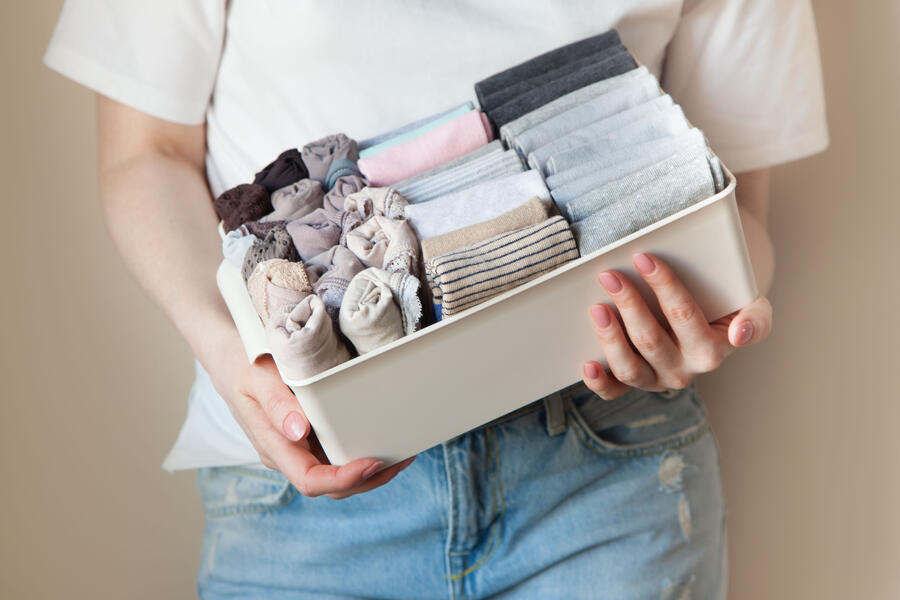
With the items you have set your heart on keeping, evaluate the categories you can sort them under and have them arranged in order within your wardrobe. From t-shirts to undergarments, having categories will help allocate each item to a spot it owns.
Step 4: Rethinking the “throw pile”
You should have a much tidier and neater wardrobe at this junction with a “throw pile” set aside. With this pile of clothes, there are many ways to deal with it and they may not necessarily entail discarding them. In Singapore, according to figures from the National Environment Agency, 168,000 tonnes of textile waste were produced in 2019, of which only 4% was recycled [1] ! Should your clothes be in a mint condition with minimal damage, consider the following ways to repurpose them that will be of good for the environment.
Upcycle
Clothes does not just have to function as clothes. Upcycling them can inject new life into these garments and create something entirely new. You could turn an old t-shirt into a reusable bag or have your socks function as hand puppets that are fun to entertain your children!
Sell online or do a swap
While a piece of clothing may be of a style you have outgrown or it simply no longer fits, consider if it could be an item someone else would appreciate. Organise a clothes swap with your friends to experiment with different styles of clothing from each other’s closet or sell it on a local marketplace such as our ChangeMakers partner REFASH, a secondhand fashion marketplace that looks to connect women’s closets and reduce textile wastage in Singapore!
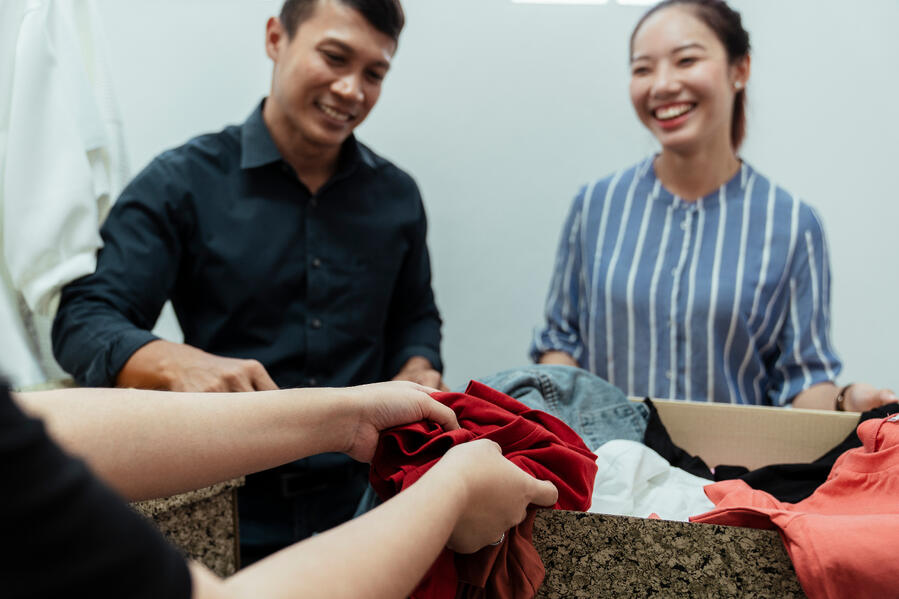
Donate
Clothes donation bins by various organisations across the island are great options as well. Most of these donation bins are tied to businesses with a cause or an organisation looking to do good for the community. By contributing your lightly worn clothing, your clothes are certainly given a new lease of life with it either being rehomed to an individual who enjoys it or used to raised funds for a good cause.
Organising your closet may seem a daunting task at first, especially with a bursting wardrobe of clothes. However, by repurposing the pieces that you no longer wear into new homes and evaluating your consumption habits, it serves to start your year on a sustainable note, breathing life back into your clothes and our planet!
As you clean up your wardrobe this Chinese New Year, don’t forget to clear out the old red packets that you may have accumulated as well. In partnership with CRU, IUIGA, REFASH and Tay Paper Recycling, Geneco is introducing used red packet recycling bins across 29 public locations from 10 February to 8 March. Collected red packets are recycled into paper pulp and repurposed into other paper products! For more information on the locations click here! Let’s all take this opportunity to Power The Change together for the planet!
References:
- [1] NEA. (2019), Waste Statistics and Overall Recycling
https://www.nea.gov.sg/our-services/waste-management/waste-statistics-and-overall-recycling
Image Credits: Nylon Coffee Roasters
Source: The Sustainability Project
References:
- 1 (2019) Climate Healers, Animal Agriculture is the Leading Cause of Climate Change – A Position Paper https://climatehealers.org/the-science/animal-agriculture-position-paper/
Eco-friendly lifestyle tips to practise as Singapore enters Phase 3
- Home
- 2021 (
- Page 3 )
[Post Date]
Eco-friendly lifestyle tips to practise as Singapore enters Phase 3
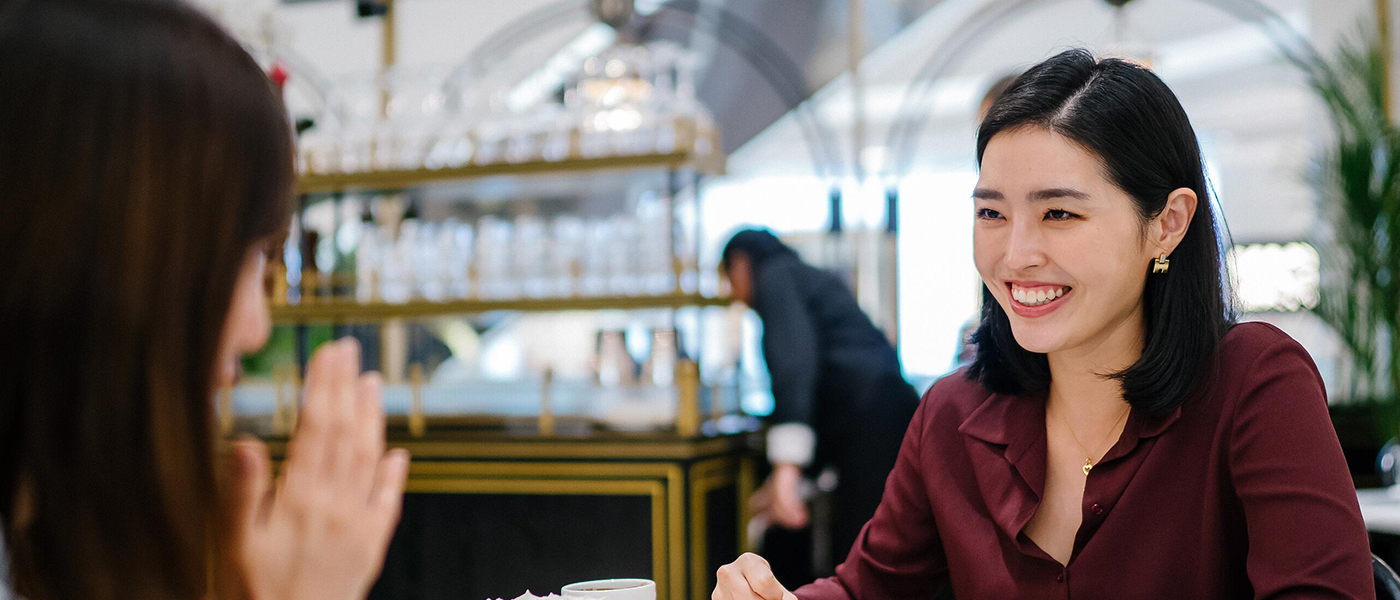
The long-awaited Phase 3 have finally kicked off and it is a sign of progress for Singapore in our fight against the pandemic. Even though many of the initial recommended guidelines are still in place as we enter Phase 3, most Singaporeans understand that the fight against this pandemic is far from over. While many of us were heartened by this milestone we have achieved together as a nation, let us also be reminded that there’s still much to be done for the Earth against climate change. We have put together these sustainable lifestyle tips which we can continue to practise, even with the new guidelines of Phase 3.
Start with reusable masks
Wearing a face masks is still an essential even in Phase 3. Everyone must play their part in being socially responsible as we adapt to our new lifestyle with the guidelines in place.

If you are still using disposable masks when you head out, consider making a switch and have a go with reusable masks which are just as good, and even more comfortable! Used disposable masks and other personal protective equipment cannot be recycled and are increasingly washing up on shorelines and causing harm to wildlife.
While the use of disposable face masks unfortunately cannot be avoided entirely, the mass public can choose to adopt the use of reusable masks for their daily wear. This can help reduce the amount of waste incurred and do our part for the Earth!
Choose to dine in
Singaporeans have been patiently waiting to be gathering in a group of more than 5 and it is time to rejoice! Group sizes permitted to gather socially have now been increased to a maximum of 8 people when heading out or visiting others!
To celebrate being able to come together in a larger group, a great way would be to choose to dine in at restaurants or food establishments when you can. After months of staying in, this has led to a rise in takeaways and home deliveries. The number of extra plastic waste generated during the two-month circuit breaker is an alarming 1,334 tonnes among Singapore households1 (that is about 90 double-decker buses)!
Have a change in scenery and opt to dine in food establishments when meeting your friends and family outside! By choosing to dine in, this reduces the amount of plastic that can potentially incur from takeaways or home deliveries, a conscious effort for the environment. Do remember to continue to be socially responsible and ensure you are safely distanced from other guests during your meals!
Consider going car-lite
With many adopting a more flexible working arrangement in Phase 3, it certainly puts into perspective the need for a car to go about our daily lives.
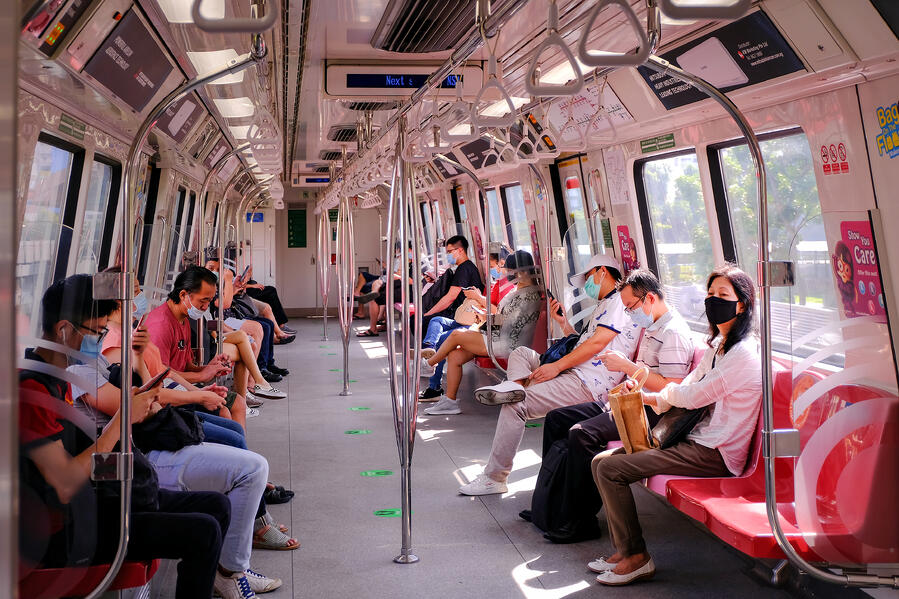
If you are one of the many who have experienced a change into your daily routine where staggered working hours and non-traditional flexible work arrangements seem to be more regularly adopted now, consider going car-lite and opt for public transportation if you can. A major advantage from going car-lite is the fall in amount of carbon emissions released into the atmosphere. With less cars on the road, carbon footprint of the masses will be reduced and there will be better air quality – a huge benefit for our planet!
Practise Mindful consumption
Similar to our social gatherings, capacity limits and for malls and large standalone stores have also increased. Resumption of shopping and consumption activities within these venues are expected to climb as well with the upcoming festive occasions.
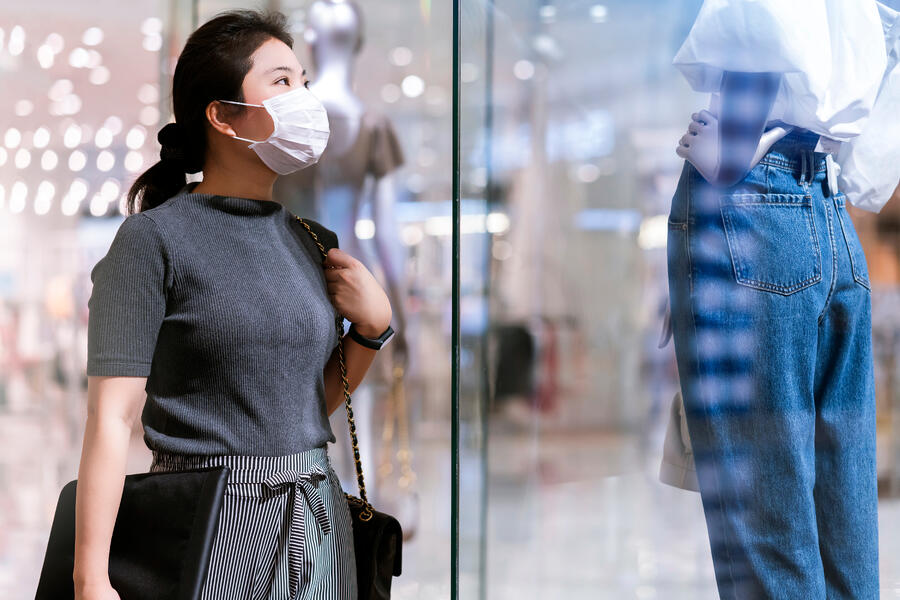
Being able to enjoy some physical retail therapy might be a mood booster among these difficult times, but before you cash out and sign off that purchase, consider taking a step back and rethink the necessity of your purchase. Looking for new pieces to refresh your wardrobe? Why not consider second-hand fashion which are as good as new with one of our ChangeMakers – Refash, Singapore’s largest online and offline thrift store. Or if you are sourcing for natural organic produce as part of the upcoming food preparations, go for retail concept stores such as Scoop.
Being mindful in your consumption is not just about buying what you need, but it can also be about supporting causes that are beneficial to our environment. This is a habit you can inculcate not just for Phase 3 but for the rest of 2021 as well!
With Phase 3 having commenced, it serves as a fresh start to power us through 2021! Keeping yourself and those around you safe will still be of paramount importance, but without compromising on safety, more can be done for the environment to fight climate change and global warming. Together, the accumulative effect of these small actions can contribute to a larger cause for our Earth!
References:
- [1] Ang, L.S, Oan, C (2020, June 21) Here’s what months of food deliveries and takeaways have taught us
https://www.channelnewsasia.com/news/commentary/plastic-zero-waste-byo-food-delivery-takeaway-resuable-container-12844324
Image Credits: Nylon Coffee Roasters
Source: The Sustainability Project
References:
- 1 (2019) Climate Healers, Animal Agriculture is the Leading Cause of Climate Change – A Position Paper https://climatehealers.org/the-science/animal-agriculture-position-paper/
